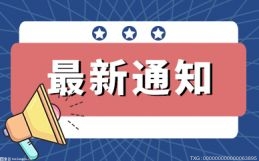SpringBoot中ApplicationEvent和ApplicationListener用法小结
2023-05-23 13:16:28 来源:脚本之家目录
一、开发ApplicationEvent事件二、 开发监听器三、推送事件四、注解方式实现监听器对不起大家,昨天文章里的告别说早了,这个系列还不能就这么结束。
 (相关资料图)
(相关资料图)
我们前面的文章中讲解过RabbitMQ的用法,所谓MQ就是一种发布订阅模式的消息模型。在Spring中其实本身也为我们提供了一种发布订阅模式的事件处理方式,就是ApplicationEvent和 ApplicationListener,这是一种基于观察者模式实现事件监听功能。也已帮助我们完成业务逻辑的解耦,提高程序的扩展性和可维护性。
但是这里要注意ApplicationEvent和 MQ队列虽然实现的功能相似,但是MQ还是有其不可替代性的,最本质的区别就是MQ可以用于不同系统之间的消息发布,而SpringEvent这种模式只能在一个系统中,也就是要求必须是同一个Spring容器。
好了接下来我们就来演练一番。
在这个模型中,有两个重要的类,一个是事件,一个是监听。事件要继承ApplicationEvent类,监听要实现ApplicationListener接口。
一、开发ApplicationEvent事件
事件其实就是我们要发送的消息体,这个一般要根据我们的实际业务进行封装,需要什么类型的数据,就是用什么类型,需要哪些字段就添加哪些字段。我们来给一个案例。
package com.lsqingfeng.springboot.applicationEvent;
import lombok.Getter;
import lombok.Setter;
import org.springframework.context.ApplicationEvent;
/**
* @className: MyApplicationEvent
* @description: 事件封装
* @author: sh.Liu
* @date: 2022-03-23 14:41
*/
@Getter
@Setter
@ToString
public class MyApplicationEvent extends ApplicationEvent {
private Integer age;
private String name;
/**
* 需要重写构造方法
* @param source
* @param name
* @param age
*/
public MyApplicationEvent(Object source, String name, Integer age) {
super(source);
this.name = name;
this.age = age;
}
}
二、 开发监听器
监听器就相当于我们的MQ的消费者,当有时间推送过来的时候,监听器的代码就可以执行。这里通过泛型来设置好我们的事件类型。
package com.lsqingfeng.springboot.applicationEvent; import org.springframework.context.ApplicationListener; import org.springframework.stereotype.Component; /** * @className: MyApplicationEventListener * @description:事件监听器 * @author: sh.Liu * @date: 2022-03-23 14:50 */ @Component public class MyApplicationEventListener implements ApplicationListener{ @Override public void onApplicationEvent(MyApplicationEvent event) { System.out.println("收到消息:" + event); } }
三、推送事件
推送事件需要使用ApplicationEventPublisher。这个对象在Spring容器加载的时候就已经在容器中了。所以我们可以直接注入使用,也可以使用ApplicationContext,因为ApplicationContext本身就继承了ApplicationEventPublisher。 我们通过一个Controller来验证一下。
package com.lsqingfeng.springboot.controller;
import com.lsqingfeng.springboot.applicationEvent.MyApplicationEvent;
import com.lsqingfeng.springboot.base.Result;
import org.springframework.beans.factory.annotation.Autowired;
import org.springframework.context.ApplicationContext;
import org.springframework.web.bind.annotation.RequestMapping;
import org.springframework.web.bind.annotation.RestController;
/**
* @className: ApplicationEventController
* @description:
* @author: sh.Liu
* @date: 2022-03-23 15:21
*/
@RestController
@RequestMapping("event")
public class ApplicationEventController {
@Autowired
private ApplicationContext applicationContext;
@RequestMapping("/push")
public Result pushEvent(){
MyApplicationEvent myApplicationEvent = new MyApplicationEvent(this,"zhangsan", 10);
applicationContext.publishEvent(myApplicationEvent);
return Result.success();
}
@RequestMapping("/push2")
public Result pushEvent2(){
applicationContext.publishEvent("大家好");
return Result.success();
}
}我们定义两个推送的方法。一个推送我们的MyApplicationEvent类型,还有一个方法推送一个字符串。
当我们调用第一个方法的时候,控制台可以打印出我们推送的数据信息。
调用推送字符串的时候,我们的监听器不会执行,原因是我们的拦截器里已经加了泛型MyApplicationEvent,也就是只会监听MyApplicationEvent类型的消息。其他类型的消息不会被监听到。
那如果我们把泛型去掉会有什么效果呢,我们来试试。
每次推送都会发送两条(可能有什么内部机制,不管了),但是两个都打印了,说明如果不加泛型,不管谁推,这边都能收到消息。
四、注解方式实现监听器
除了上面的通过实现接口的方式开发监听器,我们还可以通过注解的方式来实现,具体代码如下。
package com.lsqingfeng.springboot.applicationEvent;
import org.springframework.context.event.EventListener;
import org.springframework.stereotype.Component;
/**
* @className: MyApplicationEventListener2
* @description: 注解实现监听器
* @author: sh.Liu
* @date: 2022-03-23 15:56
*/
@Component
public class MyApplicationEventListener2 {
@EventListener
public void onEvent(MyApplicationEvent event){
System.out.println("收到消息2:" + event);
}
}这里加入了@EventListener 注解代表了这是一个监听器。方法名随意,方法里的参数代表监听的事件类型。
再次调用push方法:
发现两个监听器的数据都会打印。这一特点大家要注意一下。
好了,关于Spring中的ApplicationEvent和ApplicationListener我们就介绍这么多。
到此这篇关于SpringBoot中ApplicationEvent用法的文章就介绍到这了,更多相关SpringBootApplicationEvent用法内容请搜索脚本之家以前的文章或继续浏览下面的相关文章希望大家以后多多支持脚本之家!
标签:
相关阅读
- SpringBoot中ApplicationEvent和ApplicationListener用法小结
- 循线深挖保护黄河源头特有鱼类
- 云计算遇上电动车,跑出新模式的数智化转型|播报
- 高新区举行2023年商业秘密保护培训会议 保护企业核心竞争力
- 探访巴西蒂茹卡国家公园-世界新视野
- 今日要闻!桂g车牌号是广西哪个地方的(桂g的车牌是哪个地方的)
- 冈组词读音_冈字组词读音 热文
- 全球快看:物品遗失在滴滴快车上,滴滴说当时订单没有录音录像,司机未承认
- 家属悬赏50万寻找失联大学生 吉林医药学院就读 校外失踪已14天_观速讯
- 一受是什么意思_一受九攻全文阅读 当前关注
- 百度文库账号登录设置_百度文库账号登录
- 复习一下马特 · 海格《活下去的理由》中的生活建议:
- 《流浪地球2》排名下降,《满江红》也岌岌可危,好莱坞风采依旧_每日信息
- 魔兽世界瘟疫区成就怎么做(wow怀旧服瘟疫区成就攻略)
- 产后月子里能吃橘子吗_产后坐月子能吃橘子吗
- 新华时评|自主创新路 拳拳赤子心
- 推动产学研用深度融合,长三角光电技术创新中心在南通揭牌
- 比音勒芬做客央视财经《财访·看财报》:解读“衣茅”专心与专注背后的故事 天天观焦点
- 打工人利好!上海租赁住房又有新动作!_全球球精选
- 当归可以泡茶喝有什么好处和坏处_当归可以泡茶喝有什么好处 当前快播
- 当前观点:机构
- 《刺客信条:幻景》大量消息泄露!主线时长约15小时
- 维力医疗(603309.SH)2022年度拟每股派0.34元 5月29日除权除息
- 聚焦:固定电话怎么设置呼叫转移到别的号码_固定电话怎么设置呼叫转移
- 热文:国六b将于7月实施 业界:汽车产业迎来新一轮变革
- 天猫精灵app里怎么设置闹钟_天猫精灵在哪添加闹钟提醒
- 【当前热闻】济南市市中区第十三届全民健身运动会开幕式暨领秀城社区迷你马拉松赛举行
- 总裁他是偏执狂百度云网盘(总裁他是偏执狂) 天天新动态
- 2023年5月22日河南省预分散母胶粒价格最新行情预测
- 2023安徽阜阳市中医医院引进急需紧缺人才面试成绩公告
Copyright © 2015-2022 亚洲物业网版权所有 备案号:京ICP备2021034106号-51 联系邮箱:5 516 538 @qq.com




